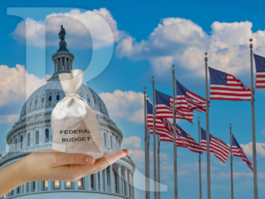65% Say Significant Long-Term Spending Cuts Unlikely Before 2012 Elections
President Obama is expected to lay out his long-term deficit-cutting plan in a speech to the nation tonight, but most voters feel the president and Republicans in Congress are unlikely to agree on major spending cuts before next year’s elections. They also aren't confident either side will come up with a serious plan to begin with.
A new Rasmussen Reports national telephone survey finds that just 31% think it is at least somewhat likely that the president and congressional Republicans will reach an agreement to significantly cut long-term government spending trends before the 2012 elections. That includes six percent (6%) who say it’s Very Likely. Sixty-five percent (65%) say the two sides are unlikely to reach such an agreement, with 21% who believe it’s Not At All Likely. (To see survey question wording, click here.)
Sixty-one percent (61%) of the Political Class think an agreement is likely. Seventy-six percent (76%) of Mainstream voters disagree.
But then 56% of all voters say the president is unlikely to propose a plan that seriously addresses the federal spending and deficit problems while being fair to all Americans, with 31% who think he is Not At All Likely to do so. Forty-one percent (41%) believe Obama is likely to present a plan like this, including 20% who say it’s Very Likely.
Voters are even less confident that congressional Republicans will propose a serious plan to deal with federal spending and deficit problems. Thirty-five percent (35%) think the GOP is likely to produce such a plan, but that includes only nine percent (9%) who say it’s Very Likely. Sixty-one percent (61%) say the GOP is unlikely to propose a plan of this nature, with 28% who say it’s Not At All Likely.
The president’s speech is driven in part by a plan recently released by House Republicans that claims to cut $4 trillion from the federal deficit over the next decade. While the plan has energized the budget debate in Washington, D.C., voters aren’t paying that much attention to it.
(Want a free daily e-mail update? If it's in the news, it's in our polls). Rasmussen Reports updates are also available on Twitter or Facebook.
The survey of 1,000 Likely Voters was conducted on April 11-12 2011 by Rasmussen Reports. The margin of sampling error is +/- 3 percentage points with a 95% level of confidence. Field work for all Rasmussen Reports surveys is conducted by Pulse Opinion Research, LLC. See methodology.
Rasmussen Reports is a media company specializing in the collection, publication and distribution of public opinion information.
We conduct public opinion polls on a variety of topics to inform our audience on events in the news and other topics of interest. To ensure editorial control and independence, we pay for the polls ourselves and generate revenue through the sale of subscriptions, sponsorships, and advertising. Nightly polling on politics, business and lifestyle topics provides the content to update the Rasmussen Reports web site many times each day. If it's in the news, it's in our polls. Additionally, the data drives a daily update newsletter and various media outlets across the country.
Some information, including the Rasmussen Reports daily Presidential Tracking Poll and commentaries are available for free to the general public. Subscriptions are available for $4.95 a month or 34.95 a year that provide subscribers with exclusive access to more than 20 stories per week on upcoming elections, consumer confidence, and issues that affect us all. For those who are really into the numbers, Platinum Members can review demographic crosstabs and a full history of our data.
To learn more about our methodology, click here.



